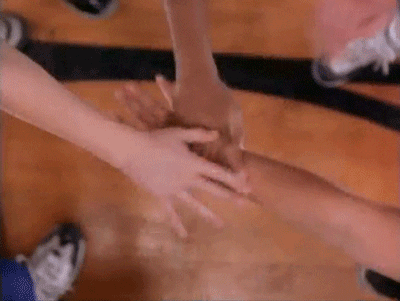Can’t PR your deadlift because the bar is falling out of your hands? Having trouble doing pull-ups because you’re slipping off the bar? Maybe you’re stalling on your presses? It sounds like you need to improve your grip strength.
Importance
In terms of exercise, grip can be a frustrating limiting factor. For example, you may have the leg and upper back strength to pull a 315lb deadlift, but if you can’t hold onto it, then what? You lose a percentage of force transfer with poor grip. Just like abdominal bracing or upper back tightness, grip is a point in your lift where you can potentially leak energy.
Programming
Exercises
Regular Farmer Carry: With a neutral posture, grip the kettlebell with your thumb around the handle. Keeping your shoulders active, walk for a distance or simply hold the kettlebells in place. If you’re using a heavy weight, go for 10m at a time. With a lighter weight, go longer.
Vertical Dumbbell Carry: With neutral posture, hold the dumbbell with an open palm grip. The wider spread will require you to really squeeze with your fingers to keep the dumbbell in place. Again, walk for distance or hold in place.
Pinch Grip Carry: With neutral posture, grip a weight plate with your thumb on one side and your fingers on the other. Try to keep your fingers acting as one unit. Pinch the weight plate between your thumb and your fingers to keep it in place. Walk for distance or hold in place.
Bottoms Up Carry: There’s an added shoulder stability factor in this one and your grip strength will be crucial to keep the kettlebell in place. Make sure your wrist, elbow and shoulder are in line and try to keep your elbow at ninety degrees.
Single Leg RDLs- Face your body parallel with the bar. Hold the sleeve of the barbell with your opposite hand or with both hands and perform a single leg hip hinge with the leg further away from the landmine. Keep your hips and shoulders square as you hinge.
Single Arm Bent Over Rows- Face your body parallel with the bar. Take a strong hinged position and perform a row with the arm closer to the landmine.

Hanging: Just hanging from the pull up bar can also build grip endurance. Make sure your entire hand is wrapped around the bar and you aren’t just holding on from your fingertips.
(Bonus) Grippers: There are also products like this that are built specifically for grip strength. These are small so you can use them in the office. Think of them as really hard stress balls.
In Conclusion
These are just some examples of grip-focused exercises. Sprinkle these into the end of your workout, on recovery days, or even between sets of non-intensive grip exercises like back squats. As with anything, you have to put time in to actually make improvements.
Isolating grip training is a rather advanced concept. It means you’re competent enough in your main lifts and movements to start worrying about little things. But, as Coach Wooden said, “Little things make big things happen.” So, if you’ve identified grip strength as a weak link, that’s great. You’re probably already pretty strong and dedicated to improving your fitness. Now, you just have to hold on.




��
ReplyDeleteCool! Thanks!!
ReplyDeletethis is helpful. TY!
ReplyDelete